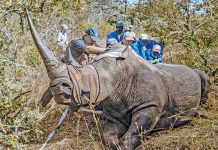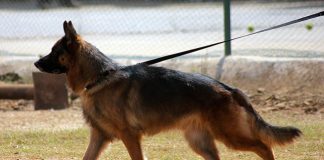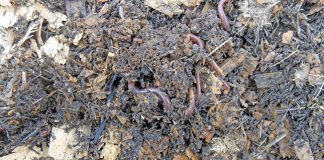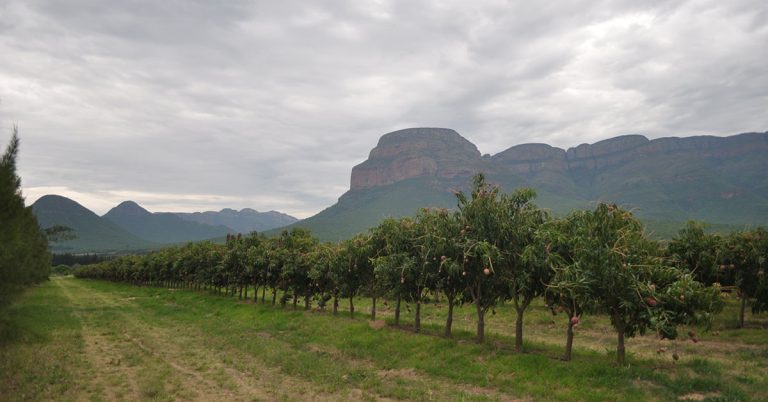
Photo: Pieter Dempsey
Jaco Fivaz has a wealth of experience in mango production and has been the farm manager on Mohlatsi farm near Hoedspruit in Limpopo for the past 17 years.
The farm produces a wide variety of mango cultivars, such as Tommy Atkins, Keitt and
Sensation, and also has a packhouse, a drying unit, and an achar production facility. The
packhouse is used only for about four months of the year, during the harvest season, while the drying unit, which can dry a variety of products, runs throughout the year.
The achar unit was started in 2016 and produces between 150t and 600t a year depending on the availability of fruit. A more recent venture, which opened a year ago, is the farm store, where mango-inspired products are directly sold to the public.
It is run by Fivaz’s wife, Belinda, and Fivaz is particularly proud of its success. Everything in the store is made from, or includes, mangoes.
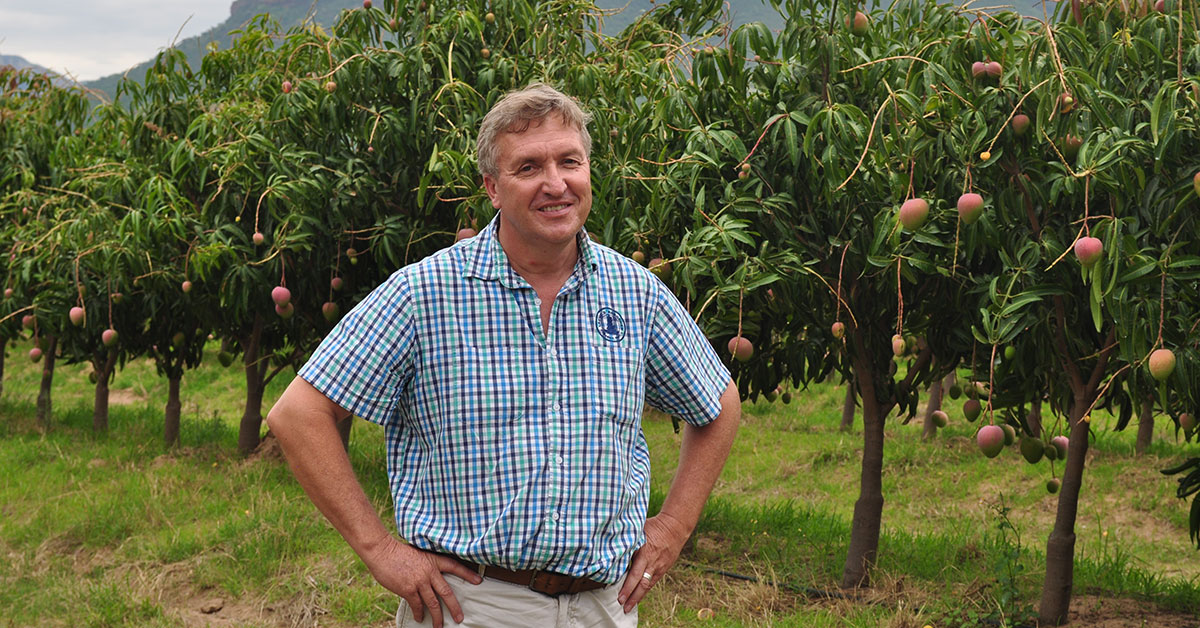
“People were always contacting us wanting to buy directly from the factory or production facility, so we decided to create a separate space to sell a wide variety of products such as achars, mango mustard and chutneys, as well as mango candyfloss.”
Fivaz started his career as a crop researcher on mangoes in 1994 at the Agricultural Research Council (ARC) in Mbombela. He completed his master’s degree at the University of Pretoria on the pollination and fruit set of litchis, but was employed as a post-harvest
researcher at the ARC.
“However, I soon became more involved with pruning instead of post-harvest research,” he says. After this, he worked as a researcher at Westfalia Technological Services and in 1998 started at Bavaria Fruit Estate, where he first started farming mangoes.
Fivaz believes that the key to growing good-quality mangoes is to plant the trees in sandy and rocky soils.
“I don’t believe in stressing the trees and it’s easier to apply nitrogen in sandy soils rather than heavy soils,” he says.
Mohlatsi farm covers 350ha, and 150ha of these are under production. When Fivaz arrived here in 2004, only 45ha were planted to mangoes, but the area under production has been expanding ever since.
Fertilisation programme and planting
The farm’s fertilisation programme is managed by two companies, Omnia Fertilizer and
Loskop ICT, on different blocks.
“These companies make recommendations based on analysis about which nutrients are needed in the soil, which we then follow to supply the trees using the correct fertilisers.”
The normal fertilisation programme includes ammonium sulphate for nitrogen, potassium sulphate, calcium nitrate, boron and zinc. The total amount of nitrogen supplied during a year is usually about 80kg/ha.
The majority of the mango trees on the farm are spaced at 6m x 1m. This, says Fivaz, is not typical for the industry and the dense planting helps achieve higher yields per hectare without sacrificing quality.
“The industry standard is about 6m x 2m. Not every cultivar can be grown at such a high
density, and in future I’ll look at planting certain cultivars that are appropriate for higher densities.”
For the Tommy Atkins cultivar, he plans to implement a 6m x 1,5m or 6m x 2m spacing, for the Keitt cultivar a 5m x 1m spacing, and for the Sensation and Lormey cultivars a 4m x 1m spacing.
“The benefit of high-density planting is that it allows for early high yields and better returns. It also forces the farmer to make the effort to prune!”
Production management
Fivaz and his team are in the process of implementing more precision farming management techniques, which currently include conducting soil and leaf analyses for each block.
“The blocks are farmed and managed independently. We decide on a block-by-block basis whether the fruit will be used for processing or fresh marketing.”
They spray the block only after it has been scouted for pests, adjusting the spraying programme to each block.
“We’re very light on chemicals, as there are many valuable insects in the orchards,
such as bees, that we need to protect.”
Environmental management takes a high priority and they work at eradicating invasive
plant species. They do not remove many trees, however.
“Bees are very important. We also plant basil to try and increase the bee populations on the farm.”
The farm receives between 400mm and 500mm of rainfall per year, and also draws
water from the Lower Blyde River water scheme. Irrigation is carried out six days a week, with micro-irrigation used for mature trees and drip irrigation for young orchards. The micro system delivers between 38ℓ/tree/day and 45ℓ/tree/day and drip irrigation 16ℓ/tree/day to 20ℓ/tree/day.
The average yield on the farm across all cultivars is between 20t/ha and 22t/ha, but Fivaz has managed to achieve 85t/ha with the Keitt cultivar. The average break-even yield is fairly high at 18t/ha and the production cost can be between R80 000/ha and R90 000/ha for intensive operations.
“I’m convinced that we haven’t yet reached the ceiling for maximum yield for mangoes. There’s room for growth; it’s possible to achieve 100t/ha.”
He adds that they are currently running one of the largest cultivar and selection evaluation
programmes in the Southern Hemisphere.
“We’re doing this evaluation in conjunction with the ARC’s Institute for Tropical and
Subtropical Crops. The first selection from this programme will soon be presented for
registration and released to mango growers.”
Diseases, insects and pruning
Amongst the main disease challenges that Mohlatsi farm faces are powdery mildew, the
fungal disease anthracnose, and brown rot, which occurs during the flowering stages.
These diseases are all treated using a fungal chemical spray. The most important insect pest is thrips, which can present a serious threat. Only one chemical is registered for the pest, but due to its high cost, Fivaz and his team often resort to using sulphur instead.
They also experience problems with the mango snout weevil. However, as the chemical used to control it can leave a residue on the fruit, which would disqualify them for
export, they use it sparingly, applying it as a drench application directly to the soil.
Pruning plays an important role in achieving higher yield. The trees are pruned in the same
manner as fruit trees in the deciduous industry, with pruning systems such as the central
leader, closed vase, open vase and palmette.
“Ideally, pruning should be done throughout the year, but cash flow constraints make this difficult to achieve,” says Fivaz.
Pruning takes place from October to December, and post-harvest pruning from January to April. The farm has 49 full-time employees and during the main harvest season employs up to 200 temporary labourers. The packhouse employs two permanent and 70 harvest-time workers, while the drying unit has 17 permanent workers and about 120 seasonal workers during peak season.
A performance incentive scheme is in place, and long-term employees are offered certain benefits. For example, permanent employees in the achar factory who have been with the company for more than 10 years are given profit shares in the business unit.
Learning from mistakes
Fivaz says that one of the biggest mistakes they made on the farm in the past was to plant a certain cultivar that showed little potential from early on.
“It’s very important to do research about the type of cultivar you plant and to ensure that
it’s suitable for the area where you farm.
“Another mistake was not investing in value-adding and diversification sooner!”
Email Jaco Fivaz at [email protected].





